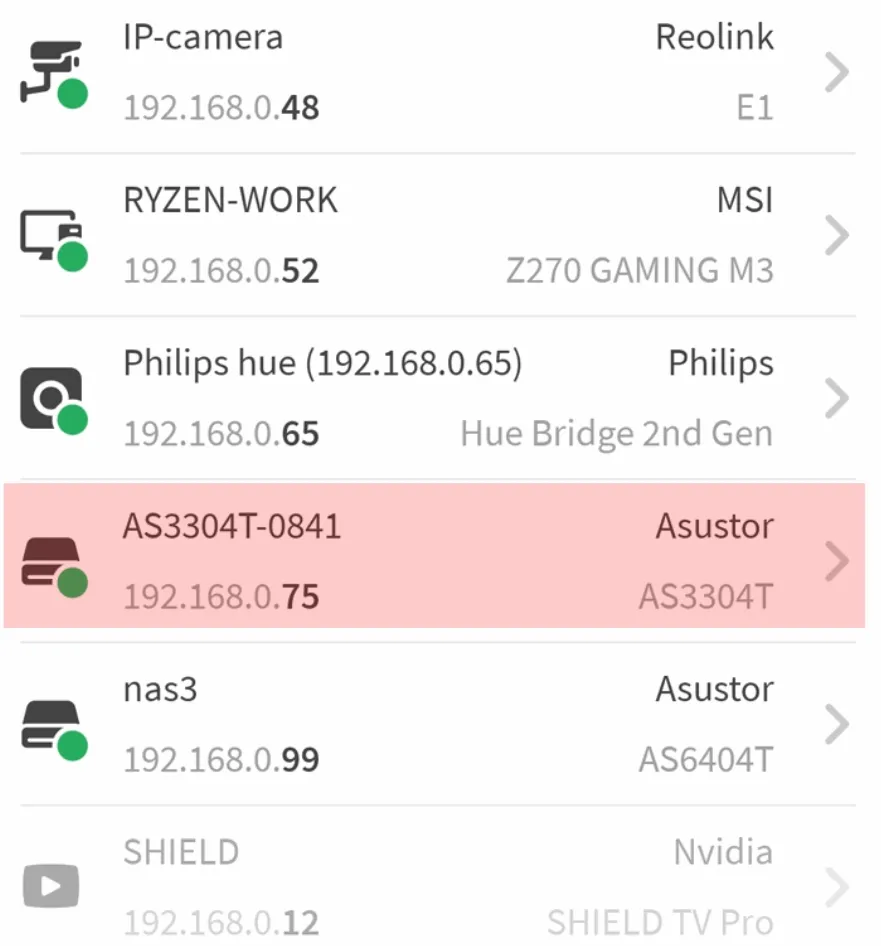NAS Explained
The Asustor AS3304T Gen2 can house four 3.5" hard drives or 2.25" SSDs. This NAS unit is tied to a single 2.5 Gigabit Ethernet jack, meaning 2500 / 8 minus QOS and random overhead like error-correction is roughly a maximum of 250~300 MB/sec on a single Ethernet connection. There's more to it than the 2.5Gbps jack, though; you'll need a storage device(s) that can handle such speeds (SSD) or HDD RAID configuration, as well as an optimized OS, the memory and processor to handle all that File IO, and that all comes together in this NAS. The storage units can be set up in Single disk, JBOD, RAID 0, RAID 1, RAID 5, RAID 6, RAID 10. Once you have installed your hardware, you'll need to bind the NAS to your Ethernet with a CAT5e or 6e cable to a compatible switch; the Asustor NAS offers more connectors, though, including 3x USB 3.2 (Gen1, 5Gb/s). When you have your HDDs installed and the device connected through your PC, you'll need to start-up a software suite to bind and set up your configuration. Please look at the install CD for that. If you have a smartphone, use a smartphone app like FING and scan the network; Asustor will show up with a corresponding IP. Type the IP into your browser, and you can start setting up the unit.
It is convenient to use the smartphone app FING to see what IP the NAS got assigned at the setup stage. Type in the corresponding IP, and you can start the setup process.
- Memory: 2GB DDR4
- Memory Expandable - none
- Maximum Internal Raw Capacity: 64 TB (Capacity may vary by RAID types)
- Expansion: USB 3.2 Gen-1 x2
- Network: 2.5 Gigabit Ethernet x 1
- System Fan: 120mm x 1
- Power Supply Unit / Adapter: 90W x1
- Input Power Voltage: 100V to 240V AC
- Certification: FCC, CE, VCCI, BSMI, C-TICK
| File Storage Capacity by Bits and Bytes | ||||
| Byte | Kilobyte | Megabyte | Gigabyte | |
| Kilobyte | 1,024 | 1 | 1,024 | 1,048,576 |
| Megabyte | 1,048,576 | 1,024 | 1 | 1,024 |
| Gigabyte | 1,073,741,824 | 1,048,576 | 1,024 | 1 |
| Terabyte | 1,099,511,627,776 | 1,073,741,824 | 1,048,576 | 1,024 |
| Petabyte | 1,125,899,906,842,620 | 1,099,511,627,776 | 1,073,741,824 | 1,048,576 |
| Exabyte | 1,152,921,504,606,850,000 | 1,125,899,906,842,620 | 1,099,511,627,776 | 1,073,741,824 |
| Zettabyte | 1,180,591,620,717,410,000,000 | 1,152,921,504,606,850,000 | 1,125,899,906,842,620 | 1,099,511,627,776 |
We've long surpassed the era of storing mere gigabytes. With our ever-growing need for more storage, the tech world has continuously evolved, bringing us larger and more sophisticated storage solutions. Nowadays, we're seeing hard drives as large as 24 TB hitting the market, with 30 TB versions already on the horizon. Amidst this expansion, one particular type of storage solution is making waves, especially among small office/home office (SOHO) and personal users: the NAS, or Network Attached Storage.
These compact devices pack a punch, functioning essentially as mini-servers that seamlessly integrate into your network to serve files. Despite their modest size and low power consumption compared to a typical PC, NAS units are incredibly versatile. They offer a range of customization options, including the ability to set up RAID configurations for data redundancy, making them a smart choice for anyone looking for reliable and efficient storage solutions.
NAS devices are some of the most sophisticated home servers you can find today, boasting features like multiple hard drive setups, partitioning, RAID configurations, user and group-based access controls, FTP and web server capabilities, MySQL support, and hot-swappable drives. While they might come with a higher price tag, the sheer convenience and functionality of a NAS unit make it an invaluable asset for managing and storing files across your network.


